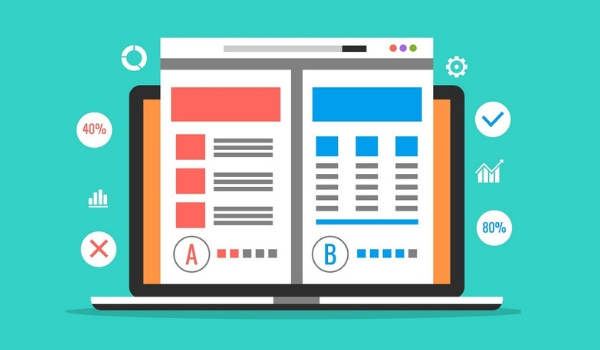ARTICLE SUMMARY
In business, we’re all searching for the same thing: leads converting into customers, right? To accomplish this, marketers create tons of content every day. It can be very tempting to use intuition to predict what type of content visitors are going to interact the most. But intuition can mislead you! That’s where an A/B Testing comes to the rescue!

In business, we’re all searching for the same thing: leads converting into customers, right? To accomplish this, marketers create tons of content every day. It can be very tempting to use intuition to predict what type of content visitors are going to interact the most. But intuition can mislead you! That’s where an A/B Testing comes to the rescue!
A/B testing is…
An experiment that consists of comparing two or more versions of a piece of content, in order to extract valuable data to analyze which ones perform the best. An A/B test (also known as A/B Split Testing) will help you to base your marketing decision off of structured data, leading you to real results.
You already know that marketing is all about tests, right? Sometimes an adjustment of color in a landing page or even the tone of voice in your blog post is what’s keeping you from achieving greater success.

In simple terms, to run an A/B test you need to create two or more different versions of a piece of content, with changes to a single variable. Show version A to one half of your audience and version B to another, and compare the performance. The results are going to help you determine which one can potentially improve conversions!
What should you use an A/B test for?
You can test virtually anything you want in your marketing materials: headlines, images, gifs, call to action copy, color and so on. But keep in mind it doesn’t mean you need to spend days and days testing a lot of variants in your materials, try to focus on things that are most likely to make a significant impact and that will likely attract more clicks.
Here are some elements you can change on a website:
- Headlines
- Call to action copy
- Call to action button
- Icons
- Paragraph Text
- Images
- Gifs
- Links
Be aware that an A/B testing isn’t limited to changes only within those elements. You can run experiments on the whole website, landing pages, email copy, content and even functionality.
What will A/B testing do for me?
The highlight here is that an A/B Testing is low in cost but very high in reward and it has multiple benefits for marketing teams, depending on what you are testing. Experimenting with these tests is often how marketers achieve their biggest goals.
Attract more visitors to your website
By running experiments on the title of your blog posts or even in an entire webpage, you can increase the number of people who click the hyperlink title to land on your domain, increasing your website traffic.
Know your visitors’ preferences
With test results in hand, you are able to extract rich insights about your visitors’ behaviors and preferences. With this knowledge, you can start to offer them valuable content instead of guessing what they want.
Get more likes, comments and shares
A/B marketing testing also gives you the power to implement a content engagement strategy. Create more appealing content, interact with your audience to reel in your target customer and start to build your authority as a human and a friendly brand.
Stop worrying about bounce rates
High engagement means your visitor will stay on your website and consume the content you’re offering. By retaining them, not only will decrease your bounce rates, but you will increase the chance to convert them into a lead.
Boost your conversion rate
Test different positions, colors and copy from your CTAs and identify which options perform better to improve click rates. Applying those best practices will increase the number of visitors who fill out a form with their contact info, thus, converting them into leads.
A/B tests are the apple of a marketer’s eyes
You already know different audiences behave in unique ways. Something that works for one type of target may not work for another— that’s why A/B tests are so valuable! When you compare and contrast two or more versions from any element, and understand the impact that it has on your user experience, you will be able to convert more customers into your success metric. It’s all about generating actionable and valuable data. Implementing an experimentation culture in your business means you never have to make decisions with a crystal ball.
Start using an A/B testing tool
With Pipefy’s A/B Testing Template, you will be able to test and analyze all the best possibilities to convert your audience by gathering all your tests progress and data in a customizable, easy-to-use platform that requires no IT to deploy.

Lean + marketing
Pipefy helps you to apply the Lean methodology in your marketing efforts. This philosophy is based on delivering value, eliminating waste and continuous improvement. Start applying Lean in your marketing processes such an A/B Testing, and seem its benefits for yourself.
Lean marketing teams follow a standardized process to manage all the activities. Lean principles support those teams to structure, organize and optimize processes, enabling them to work in a flow, without bottlenecks and waste — this includes feedback and stops delayed approval from managers.
Let’s start together!
Now that you know what Pipefy is and how it can support you, sign up and start running A/B tests with our pre-modeled template.
Our template will help you to execute tasks by splitting the whole process into phases: Data and behavior, planning, building, testing and analysis. With all those components in place, you’ll be able to validate your marketing decision based on valuable data.









